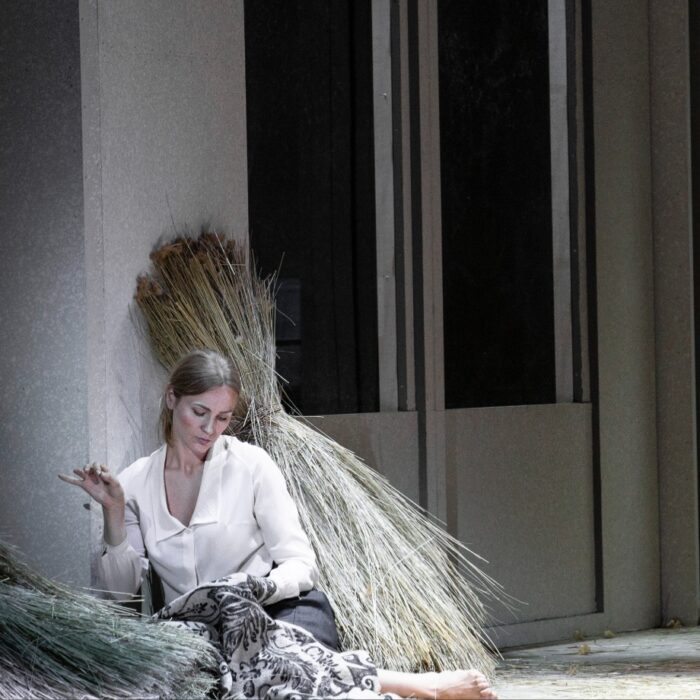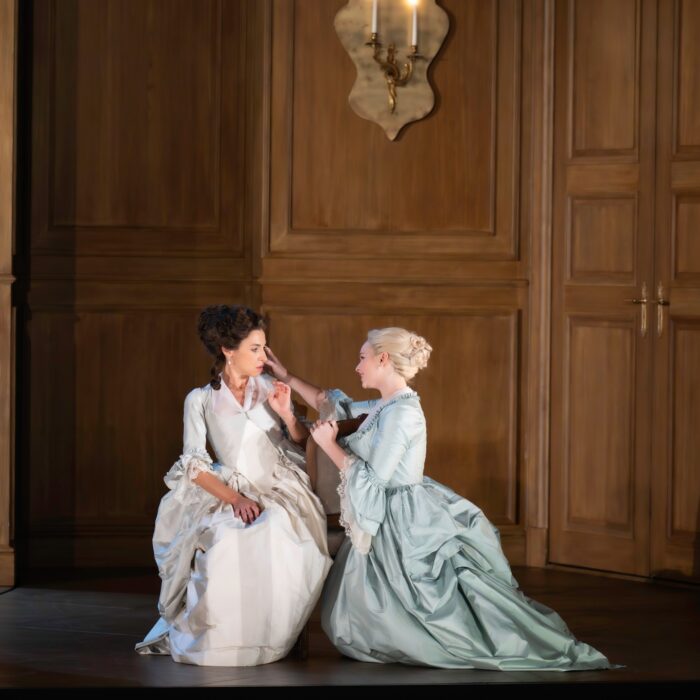
Page to Opera Stage: Destruction of Self in Thomas Mann’s & Benjamin Britten’s ‘Death in Venice’
By Carmen Paddock“Page to Opera Stage” looks at stories – real-life or fiction, old and new – that have inspired operas, and the ways these narratives have been edited and dramatized to fit a new medium. In this instalment, Thomas Mann’s “Death in Venice” proved the inspiration for a very different opera
It is often said all writers draw from their own lives, but the result is often not quite as disquieting as Thomas Mann’s 1912 novella. The German novelist was on holiday in Venice with his wife Katia in 1911 when he noticed a Polish family staying with them at the Hotel de Bains – especially their adolescent son. Katia speaks quite adamantly that nothing happened – she acknowledged, and noticed, Mann’s fascination with the child but they never interact. The couple left Venice swiftly and prematurely, upon news of a cholera outbreak, but Mann’s mind stayed behind.
The novella that is published the following year imagines an ignoble, base ending to the story for Mann’s alter ego – one older and widowed, unlike in reality, but clearly preoccupied with beauty, art, and love against sex, death, and degradation.
“Death in Venice” was a success upon publication and has remained one of Mann’s most renowned and respected works. The novella had a mini resurgence in the early 1970s, as Italian film director Luchino Visconti and English opera composer Benjamin Britten both approached the Mann estate for adaptation rights. To avoid copyright issues, Britten was advised not to see Visconti’s work, which would be released sooner; therefore, both draw from Mann exclusively. The film (1971) and opera (1973) are thus both faithful, but strikingly different, adaptations.
Visconti’s languorous shots and sweeping Mahler soundtrack is well suited to the cinematic medium, and Britten’s more frantic pace is created through the use of a large chorus and protagonist Gustav (von) Aschenbach’s ceaseless, restless voice. In both cases, Mann’s anxieties are brought vividly to life.
While Britten and librettist Myfanwy Piper illustrate the most minute interactions Aschenbach finds himself faced with, the end result finds new angles over Mann’s familiar territory.
Speech and narration
Not much dialogue exists in “Death in Venice,” but Mann’s narration, even in translation, is verbose, evocative, and image-rich.
Is there anyone but must repress a secret thrill, on arriving in Venice for the first time – or returning thither after long absence – and stepping into a Venetian gondola? That singular conveyance, come down unchanged from ballad times, black as nothing else no earth except a coffin – what pictures it calls up of lawless, silent adventures in the plashing night; or even more, what visions of death itself, the bier and soleran rites and last soundless voyage!
Piper economizes, keeping the essence in Aschenbach’s monologues. “Mysterious gondola, black, coffin black…” he sings after he is deposited at his hotel. The self-styled aristocrat is always restless, never silent, singing the audience through his descent in its minutest details; the role is unforgiving for the tenor, who never leaves the stage. Perhaps even more so than in Mann, this constant stream of conscious narration marks him as both agent and victim.
Repeated lines and echoes – both from Aschenbach and the people he meets on his travels – overlap to create a hostile, hypnotic atmosphere. As Aschenbach reasons his way into his travel and then out of – and back into – his attraction to Tadzio and infatuation with reclaiming youth, he captures and parrots back the world around him (perhaps most chillingly, the old fop’s cry of “All hail to my beauty” – comical in the former context, pathetic in the latter).
The seven faces of ruin
Britten’s late masterpiece is not just a tour-de-force for his tenor; the lead baritone must play not one but seven shadowy figures who guide Aschenbach to destruction.
First there is traveller in Munich’s English Gardens, then the eldery fop disgracing himself on the boat from mainland Italy. Upon arrival he becomes the unlicensed gondolier who threatens to row where he pleases, then he morphs into the hotel manager who sets Aschenbach up and sends his luggage missing. Soon he is the barber who offers Aschenbach his looks back, then the leader of the players who hints of plague in Venice’s streets. And throughout, he is the voice of Dionysus – tempting Aschenbach to sacrifice art for sensual pleasures.
Each character marks a step closer to Aschenbach’s fate and ruin, showing him new ideas that he latches onto. He desperately seeks salvation and inspiration, but at each turn – seeing the same face – he falls further into disaster.
Otherworldly Sounds
While Britten avoided Visconti’s film, some accounts hold that Britten’s friends did not – and relayed their feelings that the on-screen relationship between Aschenbach and Tadzio was overly salacious and sentimental. While this relationship is fleshed out anew in each new production of Britten’s and Piper’s work, the opera team distance Tadzio, his family, and his beach friends by portraying them with dancers rather than singers.
The music underscoring their movements is based on Indonesian gamelan music, with prominent xylophone and light percussion. This unusual homage in Western opera, combined with the balletic movements and lack of engagement with the singing cast, immediately casts Tadzio as from another world. It is a more removed, dignified portrayal for Aschenbach when Tadzio is so distant – perhaps even imaginary.
Doubt about the unreality in which Aschenbach’s desire takes root is dispelled as Apollo and Dionysus appear.
The gods – the former a countertenor (his only role in the opera) and the latter a baritone (one of the seven aforementioned villains) – are an invention of Britten and Piper’s, not appearing in Mann’s novella. While much can be made in the staging, the deities suggest a larger, almost cosmic struggle for Aschenbach’s soul, turning the tale into an allegory.
Musical unrest
“Death in Venice” captures the trapped restlessness of Venice under the scirocco, illuminating Mann’s haunted world by alternating unusual harmonies and restful, almost sparkling moments. In Britten’s understated score, Venice becomes a place of mystery, secrets, decay, and temptation under its classical beauty. The score eschews traditional romantic swells in favor of ceaseless dissonances and the rapidity of gamelan-inspired percussion, suggesting the terror and unknowability of the desire underneath.
If the music stops, or gives in, disaster awaits. Britten never allows this to happen. Even Aschenbach’s death is brief, and the music’s neurotic, dissonant harmonies fade out.
Some minutes passed before anyone hastened to the aid of the elderly man sitting there collapsed in his chair. They bore him to his room. And before nightfall a shocked and respectful world received the news of his decease.
***
Mann wrote “Death in Venice” relatively early in his career. Britten composed “Death in Venice” as he was dying. He delayed a critical heart operation to complete the score, and a stroke suffered during the operation ended his performing and conducting career.
“Ben is writing an evil opera, and it’s killing him,” his partner Peter Pears confided during the composition process. Yet “Death in Venice” – completed less than five years after the decriminalization of homosexuality in the U.K. – is Britten’s only opera dedicated to Pears, the originator of almost all his tenor leading roles.
For an opera so terribly concerned with an ignoble, terrifying end, and completed under health-destroying conditions, it retains a singular warmth and sympathy.
There are many English translations of Thomas Mann’s “Death in Venice”; all quotes in this piece come from H. T. Lowe-Porter’s translation, first published in 1940. Britten’s score and Piper’s libretto can be found in music libraries.
Categories
Special Features

